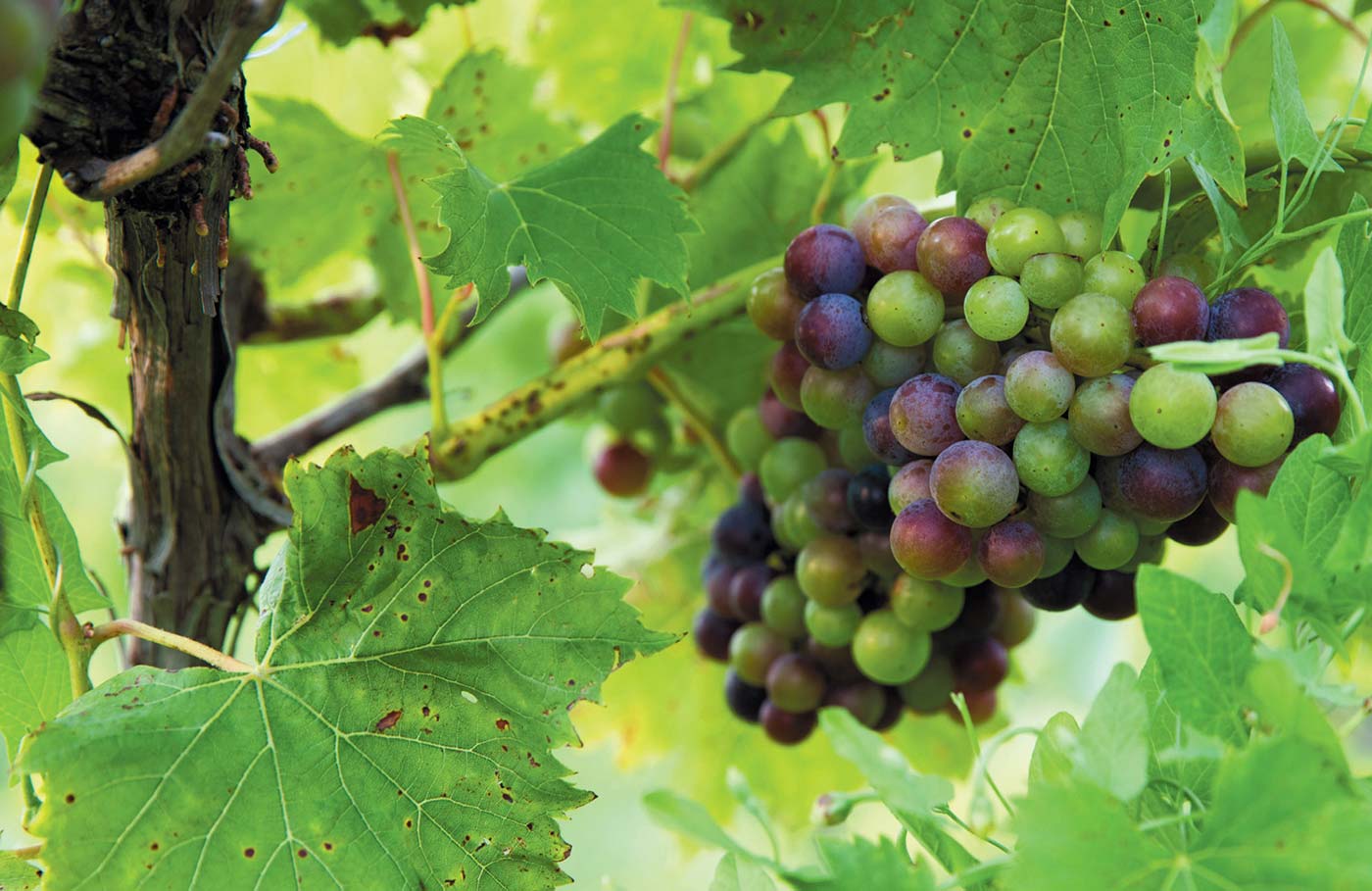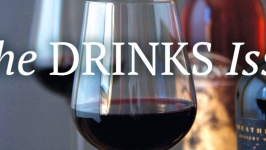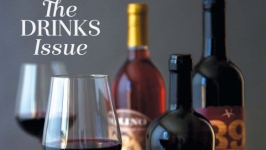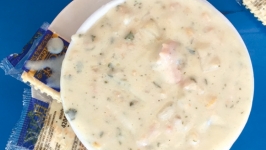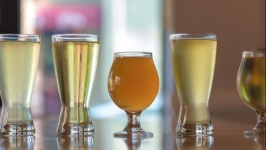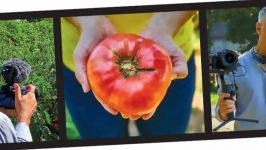Chambourcin: The Grape That's Put The Lehigh Valley And Its Winemakers On The Map
TRAVEL ALONG THE ROLLING HILLS and winding roads of the countryside surrounding Allentown and Bethlehem and you’re bound to notice signs on the side of the road pointing to the wineries. These wineries are part of the Lehigh Valley AVA, or American Viticultural Area, a special designation bestowed on a region that’s especially good for growing wine grapes. It helps vineyards brag about their special terroir.
The shale and limestone soils of the Lehigh Valley are favorable for growing one grape in particular: chambourcin. Never heard of it? You’re not alone. Chambourcin is hardly cabernet sauvignon or pinot noir, but this French-American hybrid is the unifying grape of the valley’s wineries—almost every one has a few acres of it planted. They each put their own spin on chambourcin, bottling it as dry or sweet reds, blends, bubblies, rosés, and port-style wines.
How did this ubiquitous yet lesser-known wine grape, referred to by some as the Jewel of the Valley, become the region’s signature fruit?
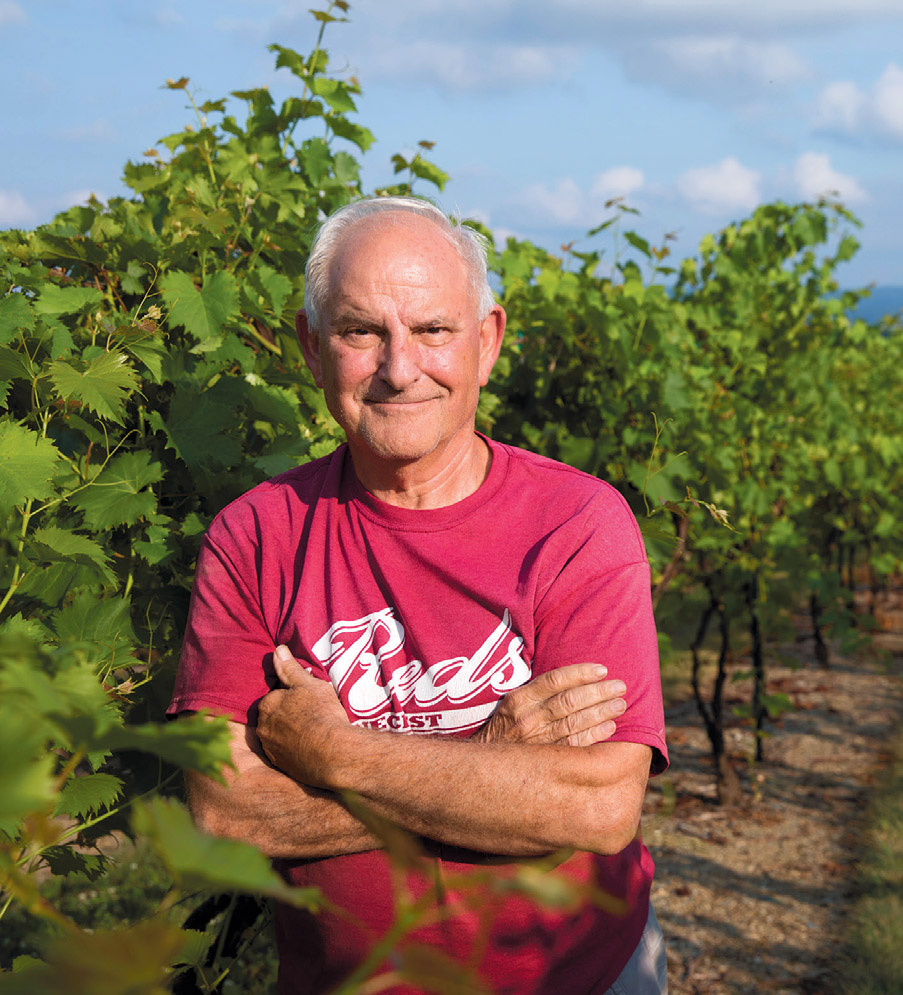
John Landis
THE EARLY ADOPTERS
It was way back in 1974 that John and Jan Landis, owners of Vynecrest Vineyard & Winery in Breinigsville, planted their first grapevines. A few years later they added chambourcin to their vineyards at the suggestion of the late winemaker Philip Wagner. In their early grape growing days, the couple consulted with Wagner, who introduced the French-American hybrid grape to America when he dedicated his own Boordy Vineyards in Maryland to growing them, according to his New York Times obituary.
“We were the early group,” John Landis says, referring to both his family and also the Skrip family from nearby Clover Hill Vineyards & Winery. “We found chambourcin grows well in our climate. It’s tolerant to the wet and unusual weather conditions. You get a very flexible product.”
These two wineries, only a mile apart, were among the first to grow chambourcin in the Lehigh Valley. In the early days, the Landis and Skrip families shared expertise with each other while their children played together. Now those children are working at their respective family wineries, leading the second generation of winemaking in the valley.
Growing grapes that are flexible is important during the hot, humid, frequently rainy springs and summers of the Lehigh Valley. Flexibility is also important when spring frosts happen after bud break (spring’s earliest sign of yearly growth on the vine) or after early fall frosts come while grapes are still on the vine. Many grape varieties must be picked before the first frost, but chambourcin isn’t as fragile. In addition to the grapes surviving light frosts, the dormant vines can withstand the bitter cold temperatures that can come in the winter.
“Chambourcin gives consistent yields in the vineyard and is cold hardy. Its loose clusters don’t split with heavy rain,” says Landis. Waterlogged, split grapes invite disease that can infect an entire cluster of fruit.
In fact, chambourcin vines are so eager to produce that they often over-crop, producing excessive clusters of fruit. Without proper vineyard management, the vines can produce weak fruit. Most wineries remove the excess clusters from the vines, leaving the healthiest ones to draw the energy from the plant and ripen properly. Well-ripened chambourcin will have a highly pigmented, dark purple hue along with cherry and berry flavors with a bit of spice. Under-ripe grapes will have greenish, dull flavors.
In Kutztown, about 10 miles west of Vynecrest and Clover Hill, Brad Knapp, owner and winemaker of Pinnacle Ridge Winery, planted two rows of chambourcin in the early ‘90s. The vines flourished— those original two rows still exist—so he increased his acreage.
“Chambourcin,” says Knapp, “produces wines that chug along in the bottle very well.”
That may not sound like the romantic language frequently used to describe wine, but for a cold-weather growing region like the Lehigh Valley, finding a grape that grows well and makes good wines isn’t easy. Few hybrids can “chug along”— or age well—for years once bottled, but chambourcin can.
Plus, in the right hands, it can produce a wine that’s every bit as enjoyable as one made from European grapes. A well-made dry chambourcin is as food friendly as a pinot noir, and a port-style wine made from the grape can pair as well with a cigar as a bottle of Port from the Douro region of Spain can.
“I have friends who do blind tastings with chambourcin,” says Knapp, “and it trips people up.”
As the early adopters of chambourcin in the Lehigh Valley demonstrated how the grape thrived in the region, others took note. Bethlehem-based Franklin Hill Vineyards, which planted its first vines in the mid-’70s, started to plant the grape in the late ‘90s.
“It’s a great grape,” says winemaker Bonnie Pysher. “The first year I bottled it, it earned a gold medal. That gave me a pat on the back to keep on going.” She bottles at least eight different wines from the vineyard’s chambourcin vines.
By the end of the 1990s, chambourcin had taken root in vineyards across the valley.
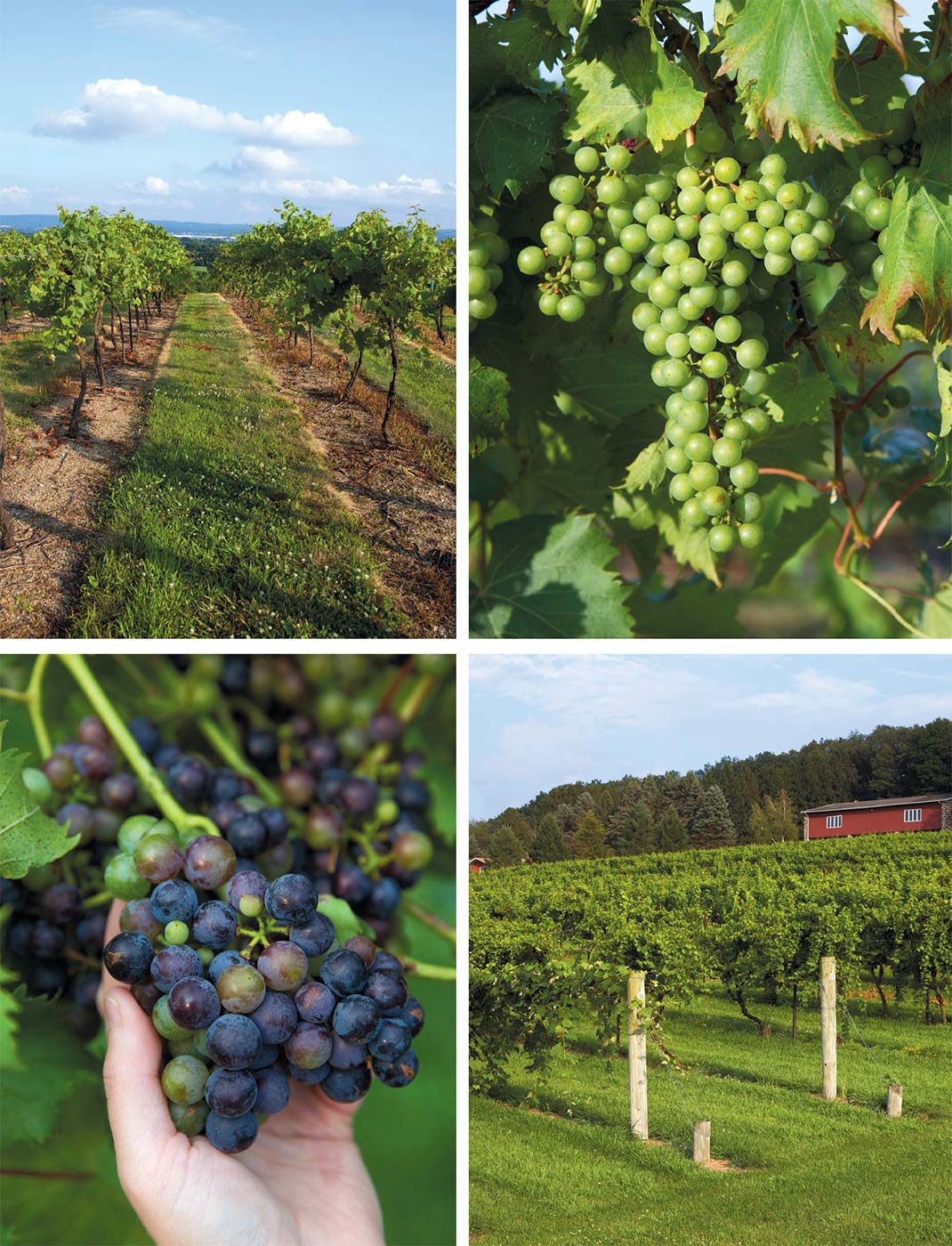
top row photos, Vyncrest's vineyards and unripe grapes. Bottom row, ripening grapes and Clover Hill vineyard
THE GO-TO GRAPE
Chambourcin is certainly not the only grape planted in the Lehigh Valley, but its prominence as the region’s go-to grape helped wineries become established and thrive. As the region’s founding wineries found success, in part due to the Jewel of the Valley, more wineries opened. By the early 2000s, the time was right for the valley to confirm its status as a wine region by applying for AVA designation.
“It was a long process,” says John Skrip Jr., chairman of the Lehigh Valley AVA and part of the second generation making wine at Clover Hill. The Alcohol and Tobacco Tax and Trade Bureau, which oversees the AVA designation process, rejected the application more than once until Skrip gave sufficient evidence the valley’s soils and climate differed sufficiently from those of nearby winemaking regions. For example, the valley has more “degree days”—days between the first and last frost— than the Pocono region to its north.
One of the facts Skrip uncovered during his research for the application is that the Lehigh Valley had one of the top three plantings of chambourcin in the world at that time. Only France, where it’s used as a blending grape for color, and Australia, where it’s often turned into a sparkling wine, had plantings that rivaled the Lehigh Valley’s.
“We hung on to that,” says Skrip, “and used that as our calling card. Chambourcin is the wine of the Lehigh Valley.”
“It’s a workhorse variety,” says Sarah Troxell of Galen Glen Winery in Andreas. The winery began planting its first block of rows of chambourcin vines in 1995, and it now has 2.5 acres of the grape.
“Every year, that first block produces the highest quality,” she says.
Troxell makes each year’s vintage of chambourcin into several different bottles, including an oaked, dry wine produced by adding pieces of oak to the plastic Flextanks used for aging and a sweeter wine made with no addition of oak.
Galen Glen’s dry Vinology has notes of cherry, blackberry, and dried herbs. The tannins extracted from the oak give it a dry feeling in the mouth. It’s wonderful with hearty foods like braised meats, mushrooms, stew, and steak. The Cellar Red is light, fruity, and slightly sweet. It goes well with pizza, burgers, and barbecue dishes and can be served slightly chilled. Troxell also uses chambourcin to make a port-style wine and both a dry rosé and a sparkling rosé.
A well-made dry chambourcin is as food-friendly as a pinot noir, and a port-style wine made from the grape can pair as well with a cigar as a bottle of port from the Douro region of Spain can.
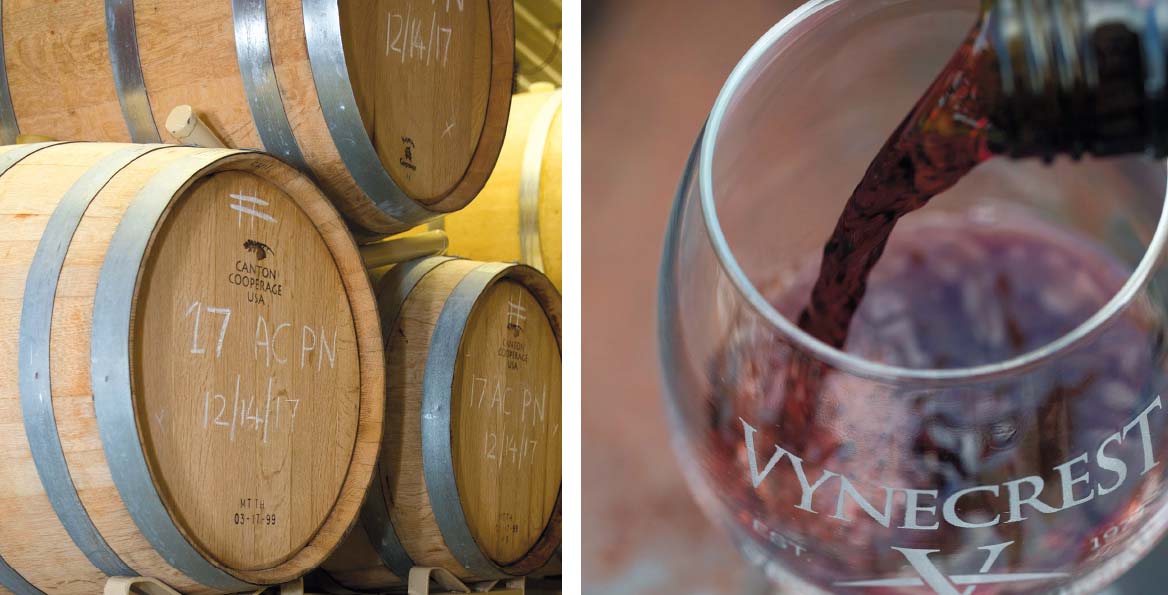 Barrels from Clover Hill and Glass from Vyncrest
Barrels from Clover Hill and Glass from Vyncrest
A GRAPE FOR THE NEW GENERATION
Once considered second-class citizens in the wine world, hybrid grapes now find respect among wine professionals and wine drinkers. Bon Appetit recently declared that hybrids such as chambourcin are “everything you want to be drinking right now.” Younger wine drinkers who are looking for something new and different are enthusiastic to give hybrids a chance whether they’re done in dry or sweet styles.
“With the millennials, there is not that focus with Vinifera,” says Kari Skrip of Clover Hill. Vinifera are grapes such as cabernet sauvignon, chardonnay, riesling, and pinot noir that are native to Europe. “Younger drinkers don’t frown upon sweeter wines and they drink whatever without being embarrassed.” Millennials have the same standards for wines as they do for foods: Local and sustainable is always preferred.
“We’ve gotten far away in the U.S. from being proud of what grows well [here],” says Kari Skrip. Hybrids do just that in colder regions such as the Lehigh Valley, but winemakers on the East Coast have often taken on the frustrating challenge of cultivating Vinifera that are more difficult to grow, needing more physical and sometimes chemical intervention.
Now, forward-thinking winemakers in nontraditional growing regions realize the wisdom of embracing the less glamorous hybrid grapes that thrive in the regional terroir, reducing the environmental impact of farming grapes while creating a truly local product.
“There’s a pride I have that we have this vineyard,” says Kari Skrip. “It’s land preserved. It’s farming. We get to do that, and without chambourcin, we wouldn’t be able to do something like that.”
It’s not just younger wine drinkers who are embracing the wines of the Lehigh Valley. Philadelphia sommeliers and beverage directors are adding them to their carefully crafted wine lists, making it unnecessary to travel to the Lehigh Valley to support these local wineries.
Both High Street on Market in Old City and Martha in Kensington offer Pinnacle Ridge’s Brut Rosé. ITV on East Passyunk carries wine from Galen Glen. Tria Taproom in Rittenhouse has Galen Glen’s Semi-Dry Riesling flowing from its taps. The Love in Rittenhouse also carries Galen Glen wines, as well as several others from wineries from other Pennsylvania wine regions.

CHAMBOURCIN WEEKEND
Experience the region on October 12 and 13, when the Lehigh Valley Wine Trail’s eight member wineries will showcase their wines during Chambourcin Weekend. Chambourcin Weekend is a free event, but some wineries may charge for tastings or vineyard tours. Visit the wineries’ websites for information about each one’s events for the weekend including live entertainment and food and wine pairings. Participating wineries include Amore Vineyards & Winery, Black River Farms, Blue Mountain Vineyards & Cellars, Clover Hill Vineyards & Winery, Franklin Hill Vineyards, Galen Glen Winery, Tolino Vineyards, and Vynecrest Vineyards & Winery.
For more information about Lehigh Valley wines, visit lehighvalleywinetrail.com or discoverlehighvalley.com.
THE BEST BOTTLES
These Lehigh Valley bottles show off the skill of the region’s winemakers and the versatility of the chambourcin grape on its own and when blended with other grapes. I was honored to serve as a judge at the 2019 PA Sommelier Judgment, a blind tasting of more than 100 Pennsylvania wines judged by regional experts. Two of the wines on this list were among the top wines at that competition.—R.S.
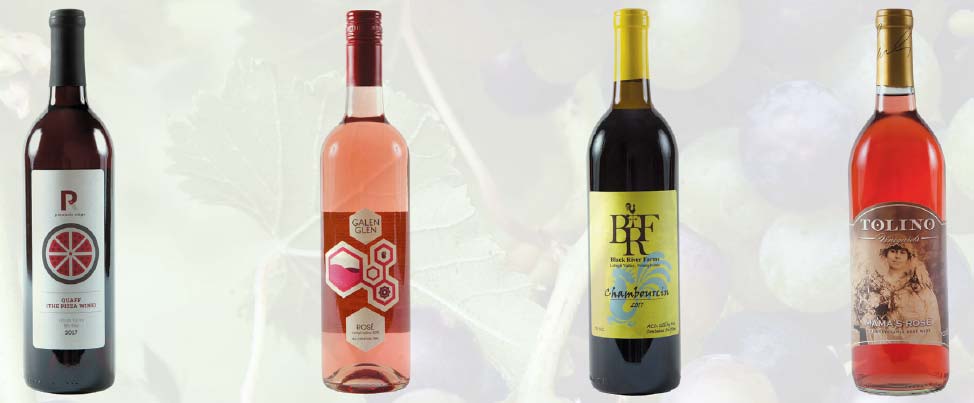
PINNACLE RIDGE WINERY QUAFF
A blend of pinot noir and chambourcin, this light, slightly sweet red makes a great pizza wine—it says so right on the bottle—and is the winery’s best seller.
GALEN GLEN WINERY 2018 VINOLOGY ROSÉ
Another wine that impressed the judges at the 2019 PA Sommelier Judgment, this fresh, fruity dry rosé is made from chambourcin, gewürztraminer, vidal blanc, and cayuga.
BLACK RIVER FARMS 2017 CHAMBOURCIN
Made from 100% chambourcin, this lightly oaked dry red wine has comforting aromas of baking spices and black cherry
TOLINO VINEYARDS MAMA’S ROSÉ
Chambourcin combines with pinot grigio and chardonnay to give this wine a deep pink hue. It’s slightly sweet with flavors of watermelon and strawberry.
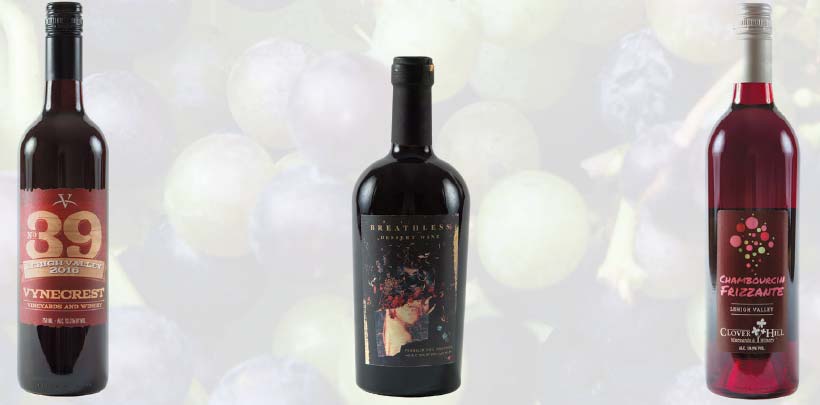
VYNECREST NO 39
This dry red blend made from lemberger, cabernet franc, and chambourcin was one of the top wines at the 2019 PA Sommelier Judgment.
FRANKLIN HILL VINEYARDS BREATHLESS
This sweet, fortified, port-style wine is made from 100% chambourcin and brandy distilled from the winery’s cayuga grapes.
CLOVER HILL CHAMBOURCIN FRIZZANTE
Dry and fizzy, this wine is made from 100% chambourcin in the Portuguese Vinho Verde style. Served slightly chilled, this low-alcohol wine is a great summer sipper.
LEHIGH VALLEY WINERIES
AMORE VINEYARDS & WINERY
6811 Steuben Rd., Nazareth
610.837.1325
amorewines.com
BIG CREEK VINEYARD
120 Keller Rd., Kunkletown
610.681.3959
bigcreekvineyard.com
BLACK RIVER FARMS WINERY
2472 Black River Rd., Hellertown
484.935.1011
black-river-farms.com
BLUE MOUNTAIN VINEYARDS & CELLARS
7627 Grapew Vine Dr., New Tripoli
610.298.3068
bluemountainwine.com
CLOVER HILL VINEYARDS & WINERY
9850 Newtown Rd., Breinigsville
610.395.2468
cloverhillwinery.com
FOLINO ESTATE
340 Old Rt. 22, Kutztown
484.452.3633
folinoestate.com
FRANKLIN HILL VINEYARDS
7833 Franklin Hill Rd., Bangor
610.588.8708
franklinhillvineyards.com
GALEN GLEN WINERY
255 Winter Mountain Dr., Andreas
570.386.3682
galenglen.com
HACKETT WINERY
8375 Carpet Rd., New Tripoli
610.657.8000
hackettwine.com
M & M VINEYARDS 18 Shepherds Hill Dr., Bangor
845.548.3260
mmvineyards.com
PINNACLE RIDGE WINERY
407 Old 22, Kutztown
610.756.4481
pinridge.com
SETTER RIDGE VINEYARDS
99 Dietrich Valley Rd., Kutztown
610.683.8463
setterridgevineyards.com
SLEEPY CAT URBAN WINERY
1840 W. Allen St., Allentown
610.351.2500
sleepycaturbanwinery.com
TOLINO VINEYARDS
280 Mount Pleasant Rd., Bangor
610.588.9463
tolinovineyards.com
VYNECREST VINEYARDS & WINERY
172 Arrowhead Ln., Breinigsville
610.398.7525
vynecrest.com


